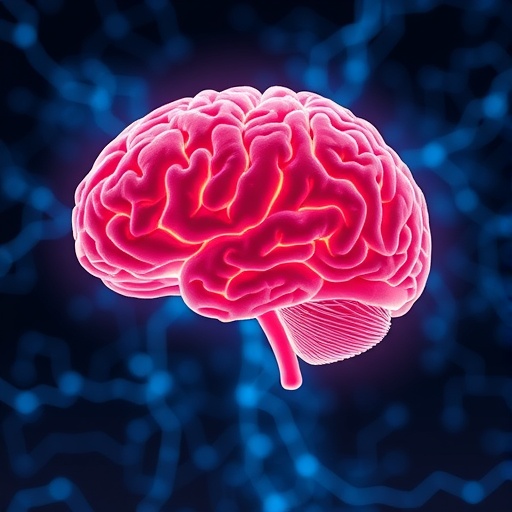In a groundbreaking study published in the Journal of Autism and Developmental Disorders, researchers have delved into the intricate relationship between the sympathetic nervous system (SNS) and autism spectrum disorder (ASD). This systematic review of neurochemical studies conducted by Neupane, Pillalamarri, and Anderson aims to illuminate how basal sympathetic nervous system functioning may contribute to the neurobiological underpinnings of autism. The investigation not only highlights variations in sympathetic responses but also sheds light on potential implications for understanding autism’s complexity.
The study begins by establishing the importance of the sympathetic nervous system in regulating bodily functions such as heart rate, blood pressure, and stress responses. Unlike the parasympathetic system, which promotes a state of calm and relaxation, the SNS is responsible for the “fight or flight” response, activating during times of stress or perceived danger. Understanding how this system operates at baseline levels in individuals with ASD may offer vital insights into the disorder’s physiological manifestations.
In their review, the authors meticulously accumulated data from various neurochemical studies, pinpointing how individuals with ASD may display atypical SNS functioning. These variations can manifest as dysregulation in neurochemicals such as norepinephrine and serotonin, which play crucial roles in mood regulation, arousal, and social behavior. The study highlights existing evidence that suggests individuals with autism may experience heightened or abnormal levels of these neurochemicals, potentially contributing to the social and sensory processing challenges commonly associated with the condition.
Moreover, this comprehensive review aims to bridge gaps in current scientific knowledge by correlating neurochemical imbalances with observable behaviors in individuals with ASD. The researchers argue that understanding the basal state of the SNS in autistic individuals could pave the way for new avenues of treatment, particularly those targeting neurochemicals that are currently misunderstood or under-researched. Increased interest in the role of the sympathetic nervous system could revolutionize therapeutic approaches that aim not just to manage symptoms of autism but to address the underlying neurobiological factors as well.
The authors employ a systematic review methodology, ensuring that their findings are not only robust but also account for a wide array of studies spanning multiple methodologies. This thorough examination of literature helps underscore the prevailing themes associated with SNS functioning in autism, such as chronic stress response and emotional dysregulation. By carefully vetting studies that focus on neurochemical effects, the researchers present a case for why these factors warrant further exploration.
Of particular note, the review addresses the differential responses observed in children and adults with autism, emphasizing that age and developmental stage appear to influence sympathetic nervous system activity. Studies cited within this review demonstrate how younger autistic individuals might exhibit more pronounced autonomic nervous system dysregulation, suggesting a developmental trajectory that merits further investigation. This finding raises questions about how interventions might need to adapt across the lifespan to be effective in targeting SNS-related challenges.
Mental health issues often intertwine with autism, complicating the overall clinical picture. The review brings attention to the co-occurrence of anxiety disorders, which are frequently reported in individuals with ASD, and how the SNS may play a pivotal role in this relationship. The authors speculate that elevated sympathetic activity could be correlated with heightened anxiety levels in individuals with autism, propelling the need for studies that look into the combined impact of neurochemicals and psychological comorbidities.
Another significant aspect of this review is its call for longitudinal studies aimed at capturing the evolution of SNS functioning over time in individuals diagnosed with autism. Understanding how basal sympathetic activity and neurochemical levels change could lead to more personalized and timely interventions, allowing for optimization of therapeutic strategies that are specifically tailored to the individual’s unique physiological profile.
Further complicating this intricate landscape is the role of environmental factors, which have been shown to influence the functioning of the sympathetic nervous system. The review also discusses how elements such as familial stress, societal expectations, and environmental toxins might modulate SNS functioning in autistic individuals, raising the question of how these external stressors can further exacerbate physiological challenges.
The implications of these findings extend beyond academia, with potential applications in therapeutic settings. The authors argue that integrating knowledge of SNS functioning into clinical practice could lead to better management techniques for addressing challenges faced by individuals with ASD, particularly through behavioral therapies that focus on stress management and self-regulation.
Future research directives are clearly outlined, emphasizing the necessity for interdisciplinary collaboration among neuroscientists, psychologists, and medical researchers. Such partnerships could expand the horizons of current understanding regarding the neurochemical environment surrounding autism and pave the way for innovative therapies. There remains a significant gap in translating findings from basic research into clinical applications, making this an urgent area for continued exploration.
In conclusion, Neupane, Pillalamarri, and Anderson’s systematic review serves as a pivotal resource for understanding the role of basal sympathetic nervous system functioning in autism. The associations drawn between neurochemical imbalances and behavioral challenges present a nuanced perspective that has implications for both research and clinical practice. As we advance our understanding of this complex disorder, considering the underlying physiological mechanisms will be crucial in shaping effective interventions and supporting individuals with autism in navigating their daily lives.
As this research garners attention in the scientific community, it perhaps foreshadows a paradigm shift in how autism is understood and treated in the coming years. The call to action for further studies, investigations, and interdisciplinary collaborations echoes the need for an ever-deepening understanding of autism and the neurobiological factors contributing to its distinctive features.
Subject of Research: Basal Sympathetic Nervous System Functioning in Autism
Article Title: Basal Sympathetic Nervous System Functioning in Autism: A Systematic Review of Neurochemical Studies.
Article References:
Neupane, K., Pillalamarri, S. & Anderson, G.M. Basal Sympathetic Nervous System Functioning in Autism: A Systematic Review of Neurochemical Studies.
J Autism Dev Disord (2025). https://doi.org/10.1007/s10803-025-07105-2
Image Credits: AI Generated
DOI: 10.1007/s10803-025-07105-2
Keywords: Autism, Sympathetic Nervous System, Neurochemical Studies, Systematic Review, Behavioral Challenges, Physiological Mechanisms, Neurobiology, Stress Response, Interdisciplinary Research, Therapeutic Approaches.




